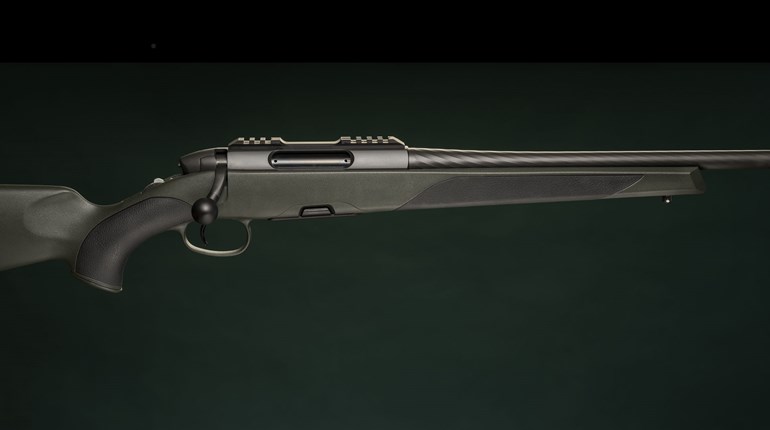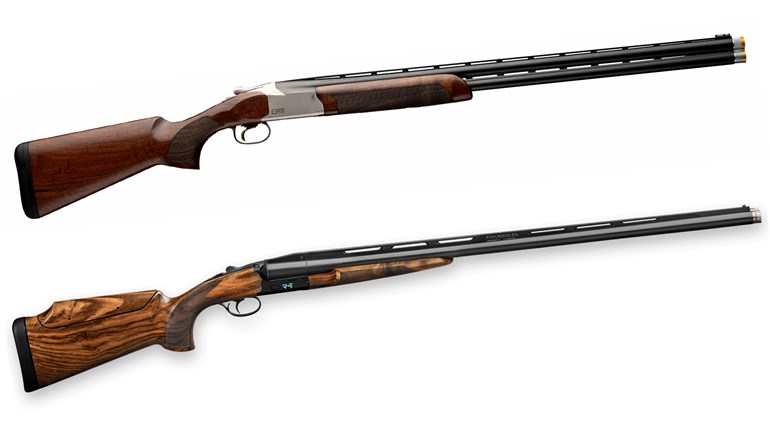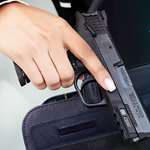
Handguns are all the rage these days for personal defense, and for good reason due to their discreet portability when away from the home. But if you hunt, there’s a chance you already have the ultimate home-defense firearm: a shotgun. Here’s how to turn any old hunting shotgun into a viable arm for defending the home.
Strictly for home defense, I’d take grandpa’s beat-to-hell duck-hunting shotgun over any top-of-the-line handgun. That’s because I’d be less apt to miss with the shotgun, and because a center-of-mass hit with a shotgun is nearly guaranteed to stop an attack. But for you to choose a shotgun over a handgun, you first must ask yourself a few questions.
Primarily, do you have small children that you may have to carry or usher in the event of a home invasion? Shotguns are big, heavy and require two hands to use, so if the answer is yes, you may be better off with a handgun.
Secondly, do you have prior experience with a shotgun? Maybe you used to hunt or shoot skeet with it? If so, it would certainly make sense for you to choose it because any gun is only as effective as the skill of the operator. If you have prior experience, you’ll be that much better with it.
But if you don’t—and you don’t plan to develop familiarity and skill via practice—you should know that shotguns can produce a massive recoil that requires some technique to master. Depending on the model, they can also be relatively difficult to reload. So, if you have never fired a shotgun and you don’t plan on practicing with it much, you may be better off with something else. But if you are willing and able to develop basic shotgun skills, there is likely no better tool for the task of defending your home—and there may be such a tool in your closet right now.
The Ideal Shotgun
The ideal shotgun for home defense has a short barrel (24” or less) so it can be maneuvered more easily in the confines of a house. It should also be a pump action or semi-automatic so it can fire multiple rounds quickly, although double barrels can also be effective. Ideally it should hold five rounds or more. It should have an open choke (cylinder or improved-cylinder) so its pattern spreads as much as possible. It should be relatively lightweight (6 or 7 lbs.) so it can be carried easily, but not so light that recoil is extreme. While 12-gauge shotguns are more prevalent, 20-gauge guns are wonderful for home defense because they are typically lighter and produce less recoil, all while delivering ample firepower. If the hunting gun in your house is not all of these things, don’t despair. There are ways to modify it. But first, let’s figure out what you’re working with.
Pump Shotgun
Examples: Remington 870, Mossberg 500 (shown), Mossberg 835, Winchester Model 12, Winchester SXP, Browning BPS and many more.

Two of the most popular guns of all time of any type are Remington’s venerable Model 870 and Mossberg’s model 500. Combined, around 22 million of these pump-action guns reside in American homes. Why? Because they are affordable, and they work great for hunting and home defense in any environment or condition, thanks to their manually operated actions that need little oil or maintenance to function properly. They can also shoot reduced-recoil loads reliably. If you have a pump shotgun, it may be all you need for home defense. After all, if they are the preferred shotgun for police and military units worldwide, one should work for you.
Semi-Automatic Shotgun
Examples: Browning Auto-5 (shown), Remington 1100, Remington 11-87, Beretta 391, Benelli Super Black Eagle, etc.

A semi-automatic’s main advantage is that the shooter need not manually pump or otherwise reload the shotgun after each shot because it reloads itself automatically. This means it can arguably shoot faster and with less skill required of the shooter to reload. Also, semi-autos inherently recoil less than pump- or break-actions.
Their downside? Thanks to more complicated inner mechanical workings, semis are typically less reliable than pump or break-open actions, especially if they are dirty. The first step in choosing a semi-automatic shotgun for home defense is to make sure it is clean and reliable with the loads you intend to use. If the gun is dirty, read the owner’s manual and give it a thorough cleaning and lube job. Then practice with it. If the gun is reliable and comfortable to shoot, your quest for the ultimate home-defense arm is over.
Double Barrel: Side by Side
Examples: Parker, LC Smith, Sears and Roebuck, SKB, Fox (shown), Ithaca, Stevens

It is very common to receive a hand-me-down double-barrel shotgun when a grandparent passes, because during the early-to-mid 1900s these guns were widely used for hunting rabbits, squirrels and quail for supper. Plenty of them are chambered in 20-gauge or even 16-gauge. While the American-made (and often very expensive) classics such as Parkers and LC Smiths may be better served in a collector’s display, they can be effective bad-guy-deterrents. But before staking your life on an old double, you should know a few things about the gun beforehand.
First, is it modern enough and in proper condition to safely fire modern self-defense loads? If you’re not sure, take it to a gunsmith before firing. Secondly, is it choked modified or more open? Some of these old guns were choked very tightly. Third, does it have ejectors, or just extractors? If extractors only, you should know that removing the shells to reload can take valuable time; if ejectors, know to roll the gun to the side when opening the action so the shells ejecting won’t strike you in the eye. Next, find out if the gun has an automatic safety. If so, practice firing, reloading and firing again so working the safety becomes ingrained into muscle memory. Finally, realize that a double barrel’s splinter-style fore-end is mainly for show. To fire, wrap the fingers of the support hand firmly around the barrels ahead of the fore-end to control the gun.
Double Barrel: Over-Under
Examples: Browning Citori, Beretta Silver Pigeon, Franchi Instinct (shown) and many others

Over-under shotguns are the most popular gun for trap and skeet shooters. There are millions of them in homes around the nation. While they only offer two shots before they must be reloaded, they are very simple to use.
Perhaps the over-under’s biggest advantage has to do with the shooter: If you have experience shooting trap, skeet, clays or birds with an over-under, its feel and manual-of-arms will be ingrained. And if you can hit a small flying target with it, you will be very likely to hit a man-sized object in your hallway. While an over-under isn’t my first choice for a defensive firearm, for people who prefer their feel and simplicity, double barrels (both over-unders and side-by-sides) have some advantages. First, a double barrel with a double trigger is perhaps the most reliable of any firearm. If one barrel fails to fire for any reason, you have an instantaneous and independent backup at your fingertips. Secondly, two types of shells can be loaded and fired in any order, such as birdshot, slugs or buckshot, just by choosing the appropriate barrel.
How to Turn a Pump or Semi-Auto Duck Gun into a Bona Fide Home Defender
First, make sure the shotgun is unloaded, and then confirm it’s in proper working order by working the action and inspecting the gun for signs of undue wear and rust. If you are unsure of its working condition, ask a local expert. But if everything looks good, take it out and shoot it. While at the range, load its magazine fully. If it only holds two shells, then you know the magazine is “plugged.” (Plugged magazines are mandated for duck and dove hunting.)
If so, find the owner’s manual (online if you don’t have it) and remove the plug. Next, check to see if it has removable choke tubes. If so, remove the tube and check its choke to make sure it says Cylinder or Improved Cylinder. If it is Full choke and you cannot find the other choke tubes for it, consider buying a Cylinder choke for it. If it doesn’t have removable choke tubes, consider buying a short, defensive style barrel for it.
Next, I strongly recommend purchasing a magazine extension for it. For about $50 it will increase the number of shells it holds in the magazine. Next, consider purchasing a flashlight mount and flashlight for it, such as the Ultimate Arms Gear Flashlight Kit for $30. Because a shotgun must be fired with two hands, simultaneously holding a flashlight so you can identify your target is difficult. Next, buy an inexpensive sling for it so you can retain the shotgun if you must use your hands to do other things during an emergency. Finally, purchase quality home defense ammunition for it and practice with it until loading, firing and moving with it becomes second nature. Read Armed Home Defense in a Condo or Apartment for more information on finding a safe direction in home-defense.















































